Labor Pool as a Constraint in SNP and PPDS
Executive Summary
- Labor constraints can be managed with a labor pool in SNP and PP/DS, and ERP.
- There is a relationship between the labor pool and machine resources.
- Is APO really the right place to constrain the labor resource?
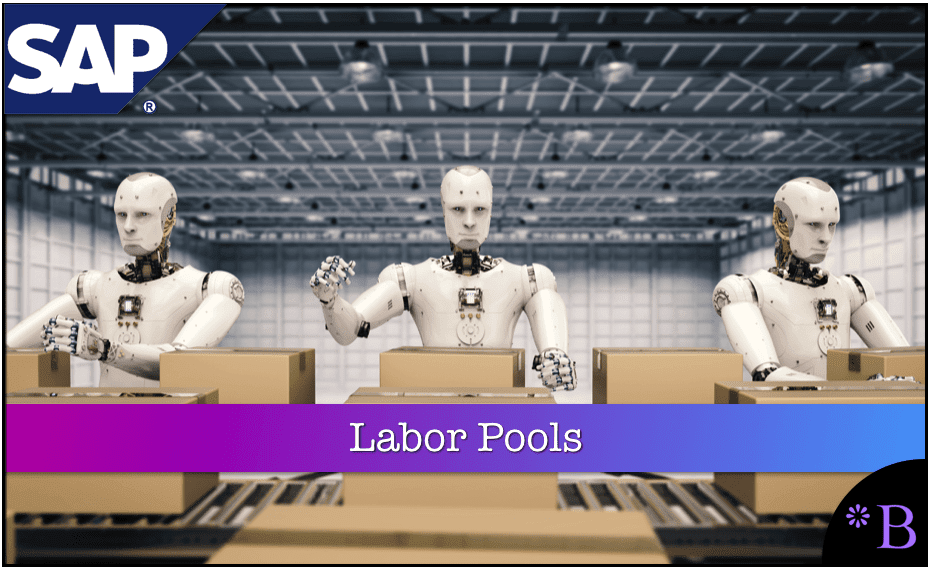
Introduction to the Bottleneck Resource
The bottleneck resource is critical to managing production constraints. You will learn about how bottleneck resources and labor pools work.
Our References for This Article
If you want to see our references for this article and other related Brightwork articles, see this link.
Notice of Lack of Financial Bias: We have no financial ties to SAP or any other entity mentioned in this article.
The Common Way to Think of the Bottleneck Resource
The most common way to set up a bottleneck resource is to find a machine or work center along the production line, which has the lowest capacity, and only models this resource as the bottleneck. There are complications of doing this, which change greatly depending upon the type of manufacturing that is being modeled (repetitive, discrete, process) that I will leave out of this discussion to focus on labor as a resource.
So we often think of the machine as the bottleneck, but in many cases, it is more of the labor, which is a bottleneck. This is not to say that a factory often cannot add workers, but they are often limited in how many workers they can add in the short term. Therefore a factory may schedule 80 workers in a day and cannot or chooses not to grow that number very much. For a variety of reasons, companies like to keep a relatively stable workforce. So a factory that may have the capacity to use 80 workers one day and 120 workers the next day is not desirable. In a hypothetical example, let’s say a company has ten production lines, and each line consumes ten workers when in use. Which lines are used throughout the production shifts changes depending upon the product mix.
Limiting the Consumption of Workers
The company wants to limit the consumption of workers to 80 per day. This means that the company does not want production orders to be scheduled for any day, which pushes the number of workers over 80. Correspondingly, this means that on average, only eight machines are utilized at any one time. Although again based upon the product mix, all machines may be used throughout the day, or 9 of the ten machines may be used at some point during the day. But on average, the total machine utilization is 80%. This is where labor pools come into play. A labor pool is a resource that represents labor but is assigned to a workstation. Labor pools can be assigned to highly automated workstations, or a workstation can be a packing area, where the worker is really doing most of the work unassisted.
However, the creation of work centers is the standard design, with the labor pool being assigned to that work center.
Labor Pools
Labor pool resources can be created and assigned to a work center in SAP ERP. Below is a routing that connects two work centers. These are “TESTW1” and “TESTW2.” You can see that there is labor assigned to each.

Labor Pools in SAP ERP
Labor pools are set up in SAP ERP. Below we can see the labor pool as it is assigned to the work center. Below we can see the Work Center TESTW1. It has the labor pool “T-Pool” assigned to it.
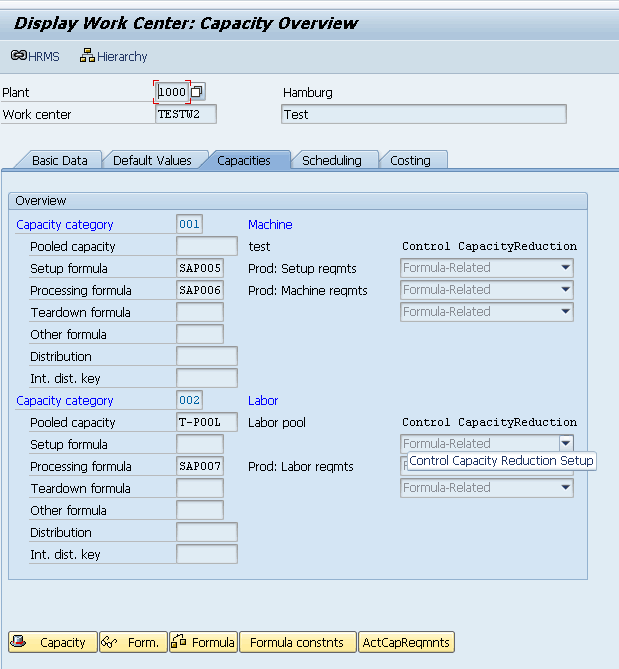
Then in the MRP4 tab, one can see the Production Version by selecting the Production Version button, which is in the middle of the screen.
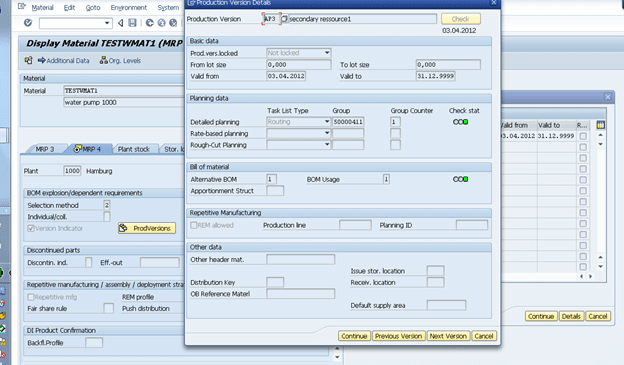
Labor Pool in APO
Once the labor pools are set up in SAP ERP, they are then brought over to SAP APO.

Here we can see that the PDS with the material TESTWMAT1 is in the PDS. TESTWMAT1 is assigned to the labor pool T-Pool.

Assigning a Labor Pool
By assigning a labor pool to a resource, the constraint becomes essentially a “co-constraint.” The resource will stop scheduling production when either the machine or the labor pool is consumed. The very nice thing about the labor pool is that it can be assigned to multiple resources. Once the specific labor pool, in this case, the “T-Pool” is consumed, that resource is no longer available to schedule. In fact, it could be one labor pool for all the resources, which would be the most simple way of modeling labor. If the labor is more specialized, which is more likely the case, multiple labor pools can be created and assigned to different resources.
Notice that the T-Pool_1000_002 shows up as a resource in the Capacity Requirements screen and the resource shown in the PDS below.
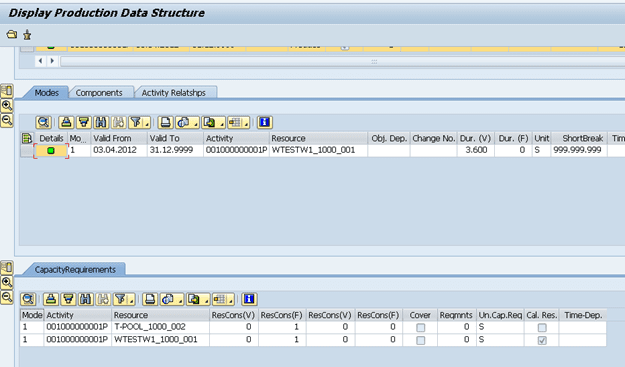
Notice below that the labor pool shows up in the Detailed Scheduling Board. This is the main view of scheduling in the PP/DS system.
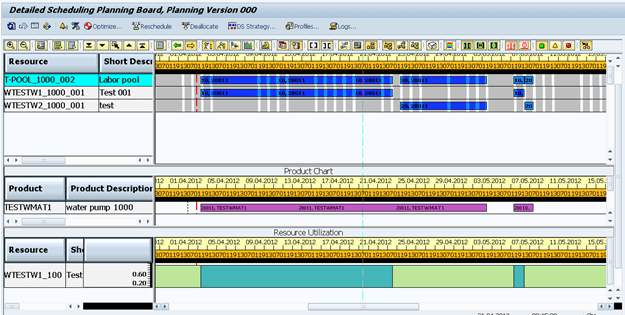
Conclusion
Using labor pools is a way to place an extra or co-constrain on a set of resources representing the labor consumption of a resource for its operation. While some factories are quite automated, labor is still required at some point in the process. Adding labor pools makes the constraint-based planning more realistic. It allows the company to set the maximum amount of labor they want to work for a time period and plan not to create planned orders, requiring the company to scramble to add more labor.
Interestingly, there is quite little written on labor pools even though they are an important functionality that provides plenty of extra capabilities.